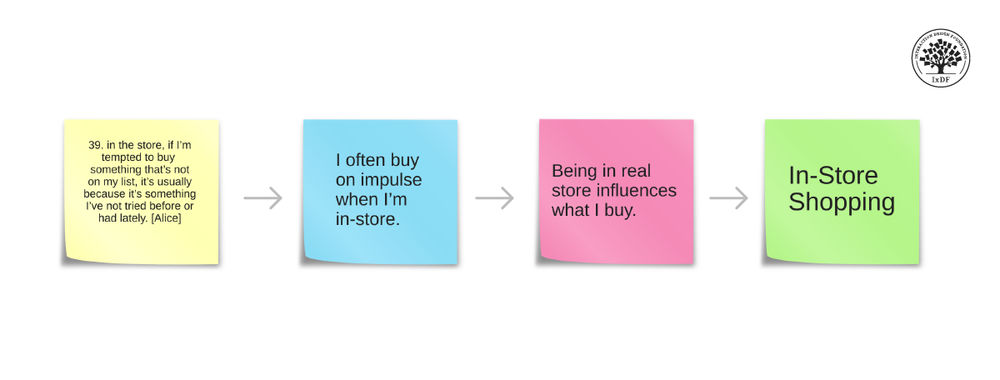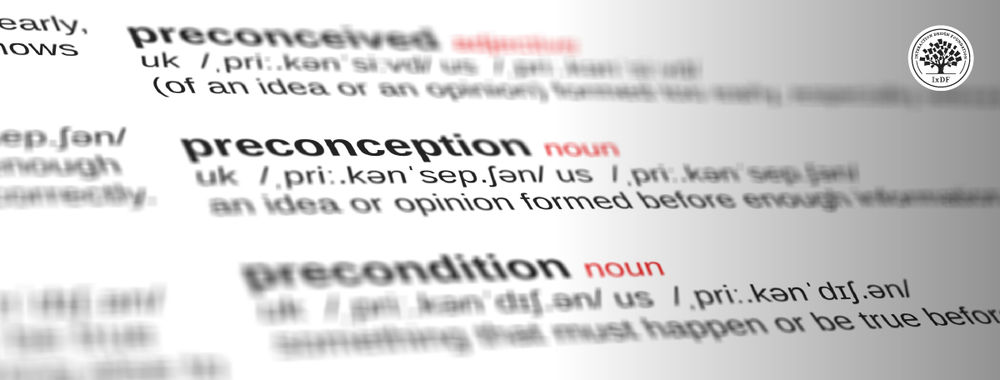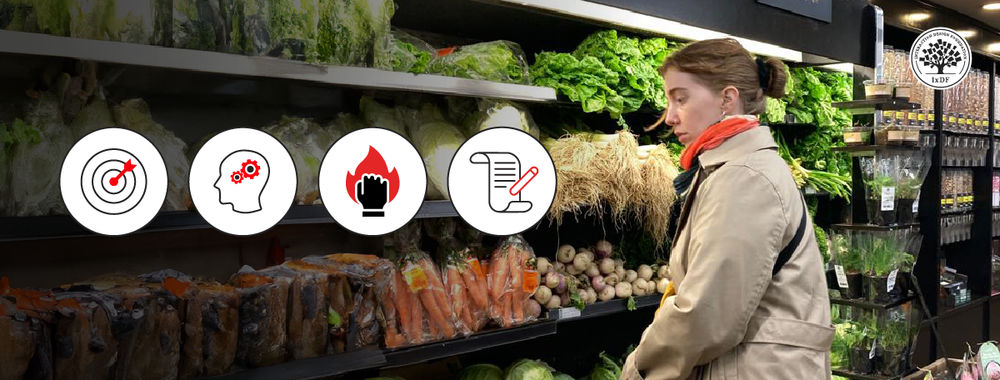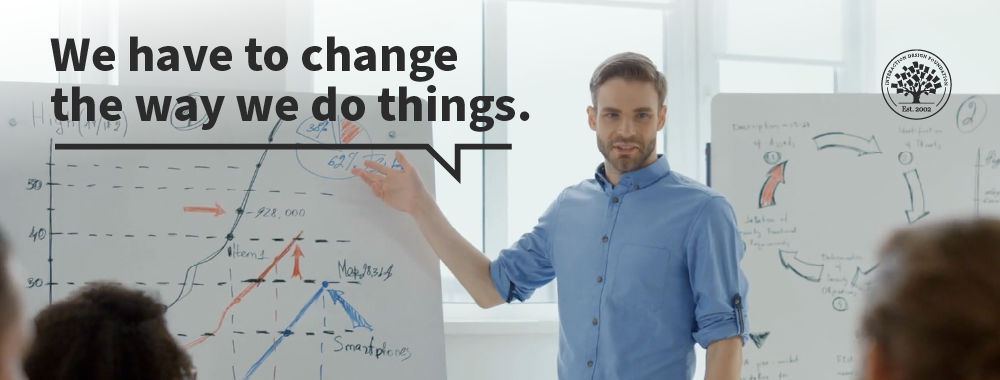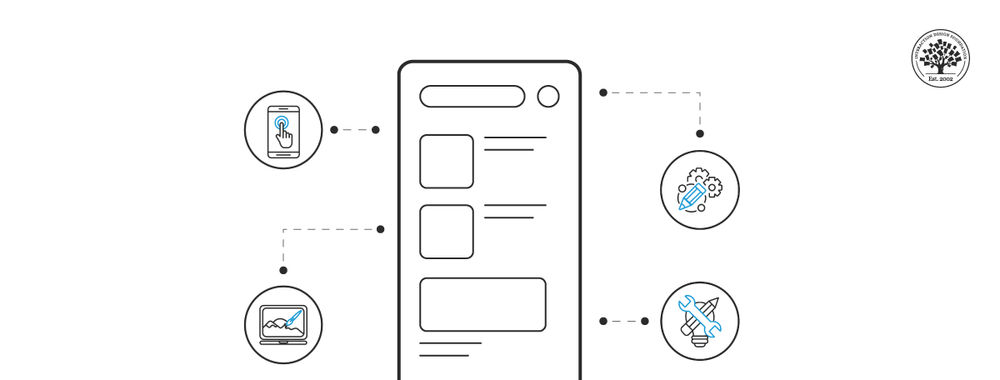Winning users’ trust is vital to having them decide to stay on your service or product and consider what they might do next. However, keeping them trusting in the long term is another crucial consideration, but it will empower you to keep new users while existing ones still feel valued.
Fostering Long-Term Trust - Loyalty
Trustworthiness is the combination of three ingredients (ability, benevolence, and integrity) that you need to show the user. In about 50 milliseconds, a new user will know if he/she can trust your site, because of the aesthetics.

Author/Copyright holder: General Assembly. Copyright terms and licence: All rights reserved Img source
Users can only trust you if they know enough about you to do so. How can you do that in 50 milliseconds? Let’s start with your technical trustworthiness. If the organization you’re designing for is a charity, you’ll need to make sure that your design is in line with how charity sites look. Therefore, your design must be attractive, predictable (i.e., recognizable) and easy to use. A good distribution of elements (involving sharp attention to tried-tested-and-true rules such as Gestalt Laws) will catch a user’s eye and show that you know your stuff. If you know your stuff, you’ll have designed in such a way that you’ve accessed users. If you get it right, you’ll be credible, and if you’re credible, you’ll be trusted.
Familiarity is the way into the user’s world. You achieve this by taking something people are likely to know already and mentioning it as it is relevant. If you’re designing for a water softener company, you can tap the common knowledge that tap water in hard-water areas leaves limescale. If you’re designing for a charity that combats poverty, a visible mention of the impact of the 2008 Super-Recession, along with some relevant statistics, will strike a chord of reality with your users.
Getting ahead of your users’ questions by offering an FAQ page helps remove uncertainty. It shows you know the ins and outs of what you business does and offers. Providing a street address means your company is truly real.
Fight self-interest! Show your users that you’re not trying to up-sell an item. If your company offers a wide range of goods or services, you’re going to be dealing with small-time buyers as well as “big-ticket” item buyers. Telling people what they don’t need will win them over; they’ll realize that you empathize with their needs; they’ll trust you even more!
So, you’ve got all these ingredients, and your user has decided to stay. Congratulations! But that’s not the end of the story...
Loyalty – Having users on your site for a long time!

Author/Copyright holder: Unknown. Copyright terms and licence: Unknown.
Loyalty is the direct result of a good UX time and again, which builds user trust. Let’s look at its dictionary definition:
“A strong feeling of support or allegiance.”
You build loyalty from your users by offering high-quality service. Fostering trust is far more than just sending out goods on time or replying to emails, however. Let’s look at how the user experiences you, namely your organization’s presence.
Your Design is Your Presence
The Internet is removed from physicality. Unlike a bricks-and-mortar store, where users can enter and have a five-senses experience, online is a different story. Users eyes tell them whether they can trust you; they also look at the tangible aspects of what you’re showing them; even if they are not physical.
Tangibles are the appearance of your communications materials, physical facilities, equipment and personnel. As a UX designer of a service, this could range from how clean a shirt is in an introduction video to the professional look of the “Contact us” link.
As designers, we only have so much control over an organization’s executive decisions. If they have an “About us” section, that will help improve trustworthiness, as will their being affiliated with established business partners. If it’s an e-commerce company, you’ll want to show their money-back guarantee information in a reassuring way. Does your company have testimonials to tell the world how other consumers feel? Whatever resources they have, you can design them to maximize impact. With careful application of such concepts as Hick’s Law, where you can offer users a lean look to keep them from thinking too much, you can build your company’s presence in their minds.
Let’s remember the medium. Building trust certainly involves constructing a bridge through the internet. Or, we could think of it as a window, because your design needs to be transparent. Be it on a handheld device or a desktop, our users experience our designs on screens. Suddenly, they’re “right there” with our organization’s message because we’ve brought it right to them.
Lean or Rich Media?
This all happens in moments. Users are “on” your product or service for no small reason; they’ve found it because they have needs, wants, or behaviors. They’ve been motivated to access your website; you have to motivate them to stay and return. Is your design intuitive enough for easy navigation? What’s the message behind your service? If it’s complex, focus on keeping the design minimalistic. If it’s lean, you can expand the features. Let’s look at a couple of examples.
Message Type | Organization Type | Media Recommended | Result |
Rich | Pharmaceutical data analysis | Lean | Pages with simple layouts, lots of whitespace. Lots of text needs to appear over several pages. |
Lean | Waxing studio | Rich | Introductory video. Room for detailed pictures, audio clips and testimonial videos. |
Combining responsiveness, reliability, and assurance are the hallmarks of any successful organization. Organizations keep their users’ long-term trust when they respond to and help them promptly, delivering on the service offered reliably and well. It’s also crucial to show that team members are knowledgeable and courteous.
Social Presence – a Living Way to Keep Trust Alive
So, your design is attractive, has those all-important interactive elements users can identify and use trouble free, and you’ve got your credentials on show. That’s a great presence; now, let’s explore cultivating a social presence.
The internet has revolutionized the way organizations establish and promote their identities. A company in any industry will do well to announce to potential users that it’s “clued up” and aware of current issues that affect people. Accessing users involves engaging them online. If someone is looking for a fitness club to join, he/she will have what’s known as a micro-moment, where finding the best group-fitness club in town becomes their entire reality on a smartphone. They might look up as search terms, “group fitness cardio”. Suddenly, there’s a list of eight gyms in town. Which one will stand out?
If your company is a gym, then they should consider a:
Blog
Social Media Page
Provide discussion boards or chat windows
Make it Easy to ‘Like’, ‘Rate’ and ‘Share’
Blogs are powerful platforms from which companies can announce themselves and stay noticed. The only potential hazard is that it takes time and resources to keep it current. It’s easy to run out of time or even ideas… there’s nothing worse than an ancient blog carrying yesteryear’s news as your most recent entry. A blog is like a child; it needs constant love, attention, (money!), and supervision, but it can grow into a powerful presence.
Wordpress is an excellent example of a blogging site offering templates. If that gym we’re designing for kept a blog updated once a week and used keywords that users are likely to enter, it would be much closer to reaching users, getting them to read the blog, look at your site design, and then join. That user would then be converted—job done!
Another great way to build familiarity and trust is through social media. Have you got an official LinkedIn and/or Facebook page? Get one or both, get connected, and get people to ‘Like’ it, while you spend a little time each day engaging with your users. For example, let’s take a hypothetical designer — Justin, who designed and runs a service that promotes the use of Canadian English and offers a service to “translate” other nations’ English to reach a Canadian market. His service message is relatively simple, so he can afford to play around with the user’s senses. On his main site, he has an introductory video; he also has a page where users can click on an interactive map of Canada. Clicking on Newfoundland, users hear, “How’s it going, eh?” in the local dialect. Clicking on the Yukon, users hear, “That snow’s pretty brutal out there,” in that different dialect. He wishes he could let users smell Canadian bacon and maple syrup, but let’s not go there!

Author/Copyright holder: Tom Fishburne. Copyright terms and licence: All rights reserved Img source
As he was designing his site, Justin was considering his options on social media. His younger brother, Kenny, who went into business with him, suggested that they try Facebook, Twitter, and LinkedIn. Justin knew that he would be too busy to manage the daily posts, so Kenny offered to handle that. So, the two established a social presence, creating pages to run alongside the blog and Tweeting every day, keeping a balance between humorous points and links to more serious discussions regarding what makes Canadian English unique. Kenny treats the LinkedIn page more seriously and doesn’t upload amusing memes.
Pretty soon, Justin has built a popular following who like his posts. Users of his business site also see this. Justin spent a little money on advertising. Soon, he discovered that he had a following in Hong Kong, so he was able to fine-tune his advertising options so that he spent an extra dollar a day on accessing that market. Twice a week, he composed posts that would access a Chinese audience. The results paid off quickly—a fifth of Justin’s “translating” comes from China, ranging from writing instruction manuals for Chinese appliances on sale in Canada to editing students’ works.
Justin’s case is peculiar to a small business or freelance outfit. However, if the concern you’re working for is a company, nonprofit organization, or university, etc., you would have to weigh up the priorities of a social media presence. Facebook and Twitter might be wonderful tools for casting your image to the world; however, LinkedIn, having a more professional look, requires different treatment.
Cultivating a social presence has a unique tool in discussion boards. Chat windows at the bottom right of the screen are especially effective because they connect with your user “in the moment”. That audience participation feature gives users a sense of empowerment because:
They can interact with your service by responding to your comments on relevant issues.
They see that you care what they have to say (although, remember that responding to their concerns in a timely manner is a vital consideration. Does your company have a dedicated responder?).
They feel that they’re connecting with your presence, and feel like it’s “their” site if they have a say.
Your users’ reactions are invaluable to your understanding them. The number of Likes is a good indicator of how your messages and posts are impacting them. It may only take a click for them to Like, but if they’ve taken the time to comment or share elsewhere, possibly with a comment, that will give you a good insight into the level of trust you’re creating.
Empathy is alive in a living social media presence
While it’s certainly important to show users that you’ve got their concerns at heart in the official site design, the big advantage of engaging them via social media is that it puts a more human face on your organization. If you can establish and maintain a social media presence that introduces and discusses thought-provoking topics, you’ll have a prime opportunity to show users that your organization understands their needs as people.
Maintaining your Users’ Relationship – Dos and Don’ts

Author/Copyright holder: CRM Audit. Copyright terms and licence: All rights reserved Img source
Your user relations are a reflection of the ongoing need to keep their trust in you strong. Any buyer-seller relationship is potentially fragile, more so than that between friends. Even if users had a wonderful first experience with your design, it only takes one less-than-good episode later for them to leave. Worse, a user may be so disenchanted that he/she leaves bad feedback. This is where interpersonal communication is vital. It’s also good to look at a balance factor:
Cost vs. Benefit
Many companies put their all into wooing new clients. The challenge is keeping the clients, who will always look at the ratio of give and take. Is the distribution balanced and fair? Known as Equity Theory, this concept is important for your organization to bear in mind. Users will remember what it offered when they first fell in love with it. They will need to keep feeling cared for, which is why communicating regularly and openly with them, and offering freebies and deals are important. As perceived service quality increases, customer loyalty to a specific online vendor increases correspondingly.
One important design consideration is brand image. Whatever service you offer, you will have created an online presence that can potentially access millions. Users will get to know things like:
Your logo - Your character
The image your design portrays needs to be consistent so that users can find and recognize it. Any change in color scheme or an altering of typesetting will cause them to stop and wonder when they see it. Beware! This means that they have lost familiarity; the link of faith that connects them with what they expect to see in your design has been broken. That means that their trust is failing. Keep your organization’s logo and image consistent so that this doesn’t happen.
Over time, whether you’re adding new pages or just a new post, make sure that there are a) no errors and b) no unifinished sections in your design. A poor writing style—including spelling and grammar—rings alarm bells in users’ minds. If the designer/organization can’t communicate, what else is he/she going to do wrong? Even if your spellchecker finds nothing wrong, proofread your work or ask someone else to—are any of your phrases awkward, perhaps ambiguous? The moment your user has to reread to make sense of your text, you’ve got him/her working, which is what you don’t want, because that generates uncertainty.
Incompleteness and consistency are other areas to watch. Did you provide links that work? Did you sort out every aspect of the users’ journey, from your landing page, to the FAQ, to the shopping cart and beyond? Think of this like putting escalators in a tall building. Did you check that the user, once on that ‘escalator’, comes off at a desired ‘floor’? Don’t leave it to chance—finding a dead link is like a user falling off at the end of a journey. That will destroy trust.
The Take Away
Strengthening and maintaining users’ trust involves establishing a presence. Depending on the complexity of your company’s message of service, you can design to involve rich or lean media. Users will acknowledge a strong presence if they can see a video and/or hear an audio message ahead of just having text to read.
Bringing your company to life is essential to furthering and fostering the trust-building process. Credibility and maintaining familiarity with users are key. Your good-looking, usable design has to win over the user in milliseconds. It also has to be what the user expects to see in a design relating to your organization’s nature or industry. However, fostering trust involves more work. Focus on the tangibles, or the parts of your organization that you want the users to “touch” and experience. Establishing a presence means that your design has the transparency and effectiveness to present every part of what the organization is offering in such a way that the user forgets he/she is dealing with it through the internet. If you organization has an “About us” page and testimonials from existing customers, these will present its caring, human side, while it can use a money-back guarantee and business partnering to strengthen business reputability. Social media and blogging can aid greatly in anchoring your company’s social presence, although you must consider the sustainability of such endeavors as pages and blogs.
Overall, involving your users is vital to keeping their trust. If they feel involved, that they have a say, and can comment, then that will help you gauge their contentment. To retain their trust—or loyalty as it will stand in the long term—your company needs to show that it’s aware of consumer concerns and engages them frequently, in a courteous manner and professional style, also to confirm that they’re as satisfied as they were when they first decided to buy from it. They will be watching your design again and again when they return to it; make sure that there are no errors to put them off keeping that trust.
Keywords
Presence, Loyalty, Tangibles, Empathy, Social Presence, Social Media
Related Concepts
Presence, Credibility, Trust, Equity Theory, Persuasion
Where to Learn More:
Arlen, C. (2008). “The 5 Service Dimensions All Customers Care About”. Service Performance, Inc.
Gefen, D. (2002). “Customer Loyalty in E-Commerce”. Journal of the Association for Information Systems.
(Guest Blogger) (2015). “UX Principles to Increase Yours Website’s Social Presence”. Get Response.
Teague, J.C. (2014). “10 pro tips to get people to trust your site”. Creative Bloq.
References:
Hero Image: Author/Copyright holder: Unknown. Copyright terms and licence: Unknown.




